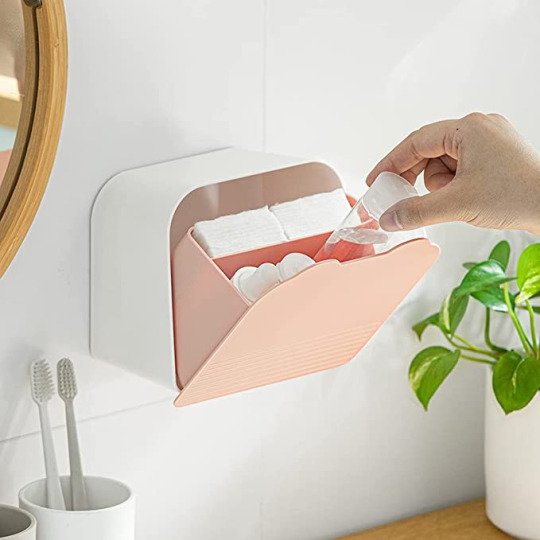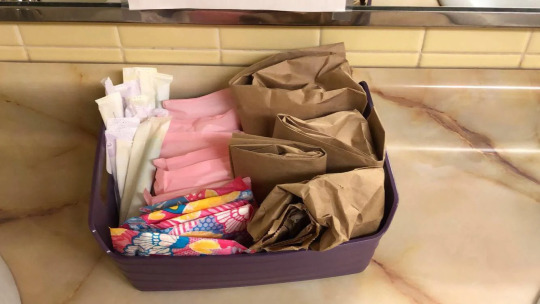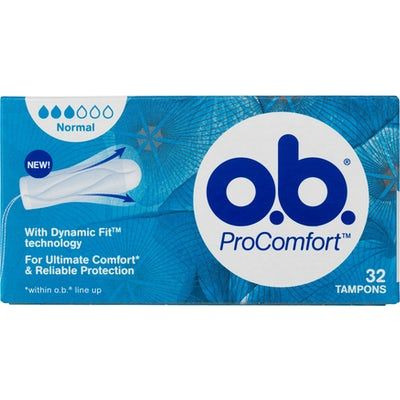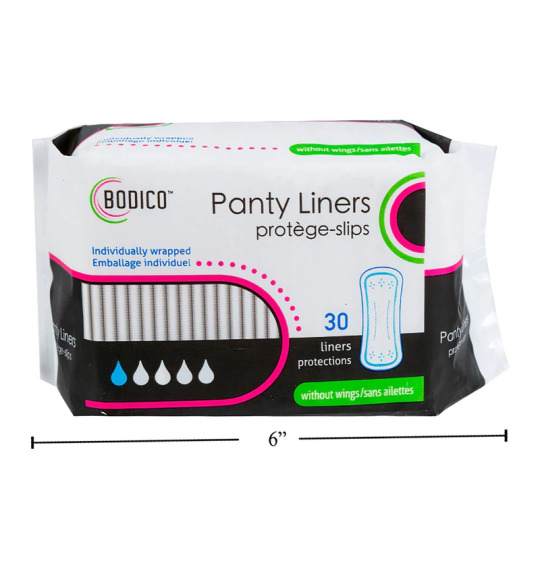Period Poverty is real, and it doesn't have a gender. This page holds some answers for the common questions that arise when approaching the topic of inclusive and accessible period provisions.
Don't wanna be here? Send us removal request.
Text
Product disposal guide
Having disposal units available for all bathroom users is an important practice that promotes inclusivity and discretion. It also will promote proper disposal of menstrual products and prevent them from being flushed! Here are a few options that we’ve found that might work for you and your space!

Harlo Trash Can
Want to keep it simple? A basic trash can with no bells or whistles like this one is always an option! While we do encourage disposal units with lids to encourage sanitary and discreet practices, any disposal bin is better than none and this one is a viable option that goes for $8.50 CAD

Eklon Trash Can
This trash can has a lot of great features that we approve of! It has a lid with soft, quiet closure for maximum discreteness. The lid is operated by a foot pedal which is a bonus feature that promotes cleanliness in the washroom setting. There is even a handle at the back so it can be moved easily if needed. It is 9 ½” in height and holds a volume of 3L. Perfect for small corners and single stall bathrooms!

ULINE Wall Mountable Sanitary Napkin Receptacle
Looking for a disposal unit that can be mounted to the wall for easy access? No problem, we’ve got you covered! The lid is an awesome feature that allows the menstruator to dispose of their products with discretion, and the plastic material allows for easy cleaning. Wax paper bags that fit inside are sold separately, but are available for purchase. Dimensions of this product are 11(H) x 9(W) x 5(D)”


Citron Personal Hygiene Waste Disposal solutions
Do you have a large number of stalls or bathrooms that require disposal units? Companies such as Citron provide a complete servicing of washrooms. They can provide disposal units that are hands free and lidded, and even maintain them throughout the week. They advocate that disposal units should be provided in all bathroom stalls, which is what we love to hear! If you're interested, they provide quotes on their website for all of their services.
0 notes
Text
What is the Menstruation Directory?
The menstruation directory is a database that provides cis women, non-binary, trans men, intersex people and other gender diverse and gender non-confirming people with menstruation products. We have listed known establishments that sell gender-inclusive menstruation products and gender inclusive restrooms. This database is accessible by the public and we are asking for your help to grow it. If you come across any pharmacies, convenience stores, and supermarkets etc that sell gender inclusive products please add them to the list. Furthermore, if you visit any schools, post secondary institutes, business, restaurants, public and community spaces that provide patrons with gender inclusive products in their restrooms, add them to the list! Accessibility to gender inclusive menstruation products is key to serving the needs of our community!
Click here to find the menstruation directory and input any information you'd like others to know in regards to period inclusivity!
0 notes
Text
"STEALTH" in period products, approaching safety in period inclusivity

These jokes can be found anywhere on the internet, period products have packaging is rarely as discrete as we'd like. Even though these jokes are funny, they also call to attention serious safety risks for some menstruators and a big reason period inclusivity is so important.
Unfortunately, violence against trans, genderqueer, and nonbinary people is still very much a worldwide issue. Menstruators that present masculine and use public men's washrooms may put themselves at risk by accessing or using menstrual products in some areas, outing themselves to those nearby.
To "stealth" is a practice in which a trans person completely separates themselves from any former identity as their assigned gender at birth and avoids disclosing any information regarding such to those around them. This is often done when a trans, genderqueer, or nonbinary person may be unsafe or at risk of discrimination because of their gender identity. We sometimes use this term on our page to also describe the safety factor of certain products and practices in period inclusivity.
The major considerations we'd like you to keep in mind when practicing period inclusivity follow the STEALTH acronym:
Sound - are the products you're providing in your spaces likely to call attention to users?
Toilets - is the washroom multi-stall? How many closed-stall toilets are available? How comfortable would someone who is stealth be using these amenities around other users?
Education - are there policies and practices in place at your site that promote safe period inclusivity practices? Do you have ways to help people feel safe accessing menstrual products in your amenities? Is there signage about period inclusivity and normalizing the presence of products?
Access - do people have a safe way to access these products if the washroom is multi-stall, and if there are others present at time of use?
Location - how easily can a menstruator find your provided products, how safe is the location they are to access it from? Can the products and related disposal units be located within seconds of entering the restroom? Is there signage indicating where these products might be found?
Traffic - how busy is your site, and how many people generally use the restrooms available? In a busier site, is there access to multiple restrooms, or single-stall restrooms? How can traffic and usage affect someone's comfort and safety when accessing menstrual products while stealth?
Hygiene - is there a safe and hygienic way for a person to dispose of applicators, used products, and packaging without calling attention to themselves?
Some suggestions to help improve the "STEALTH" score of inclusive washrooms and practices:
If a restroom is too busy or other factors might make it difficult for a person in stealth to access products from a single wall-mount dispenser in the restroom; consider providing products using smaller wall-mounted units in each stall if possible, or in public spaces outside of restrooms that are discretely accessed (without having to ask or self-identify for it)
Provide disposal units in-stall to avoid a person outing themselves by disposing of products, applicators, or packaging
If possible, provide products that don't produce much sound when in use. This can include tampons that are available in cardboard packaging, reusable cloth pads, and (though the packaging and company messaging is less gender-inclusive) U by kotex has a product line that promotes quiet and discrete packaging.
Education, education, education. And signage. Make sure staff on site are aware of policies around period inclusivity, and make it easy. Everyone has a right to access hygiene and comfort products they need, including all who bleed (sorry, it's corny but we love a rhyme). Create an environment as much as possible that promotes learning and understanding of other's experiences and needs. Provide signage in mens' washrooms to help de-stigmatize the idea of period inclusivity. Provide signage to let menstruators know that they are supported, what you will do and have done to promote their safety and well-being, and how to easily access the products they need.
0 notes
Text
youtube
youtube
youtube
When we talk about period inclusivity, the biggest barrier that we see is language and perception. On our resources page you can find more information about inclusive products, and how to learn more about gender diversity and inclusivity when talking about menstruation. These videos are just some examples of experiences people have around gender diversity and menstruation, and how evolving language and appropriate products really do make a difference.
0 notes
Text
Product Dispensers - Bought or DIY
Finding the right way to provide your products to your staff and patrons takes some considerations on budget, space, and products themselves. Below are some various options for types of dispensers or just some ideas for how to best provide access to menstrual products.
Aunt Flow Model E dual-product dispenser is compact [26"(H) x 16.25"(W) x 7"(D)], easy to load and is built to dispense both pads and tampons. The dispenser is built without coin operation, already set to provide free and accessible menstrual products. We recommend this for large-stall multi-stall washrooms or single-stall washrooms due to the space requirements of any wall-mounted dispenser.

Evogen EV2-FREE pad and tampon dispenser - smaller than the Aunt Flow model [17.25"(H) x 10.75"(W) x 6.5"(D)] this is another small wall-mount option that dispenses products for free without any modifications needed - and a relatively inexpensive option for wall-mounts at $168 CAD per unit.

Necessities® Courtesy Dispenser (HS-6166) - equipped to dispense tampons, pads, and disposal bags, simple design and can be mounted to the wall with screws or command strips, or just placed counter-top. At 16” tall x 6” wide x 4.25” deep, this unit could also be implemented in-stall in multi-stall washrooms with enough space with relative ease and run about $30-45 depending on seller.

Poeland Wall-Mounted Storage Box - another small wall-mount that's sleek enough to fit provisions for small traffic throughout the day without constant re-stocking and could fit multiple product types inside. Its small dimensions (6.1 x 6.1 x 3.5 in) make it easy to mount (with adhesive strips!) in-stall for discrete access in all restroom sizes, and it's available for $12.99+shipping from amazon, making it quite cost-effective. There are most certainly similar products in lots of home goods stores and online that come in various shapes and colours for whatever suits the style of your space, and the needs of your patrons.

A classic DIY counter-top basket! This is probably the cheapest option, and most appropriate in single-stall, gender-neutral, and women's washrooms in terms of anonymity and to help avoid users from outing themselves in a crowded restroom, but could also be implemented in-stall in multi-stall washrooms by using some smaller baskets and command strips to mount on stall walls. The cost of these is usually just a few dollars, as a basket is easy to find at any dollar store, home goods store, or craft store at low cost. An alternate to this is a shower caddy - easy to mount on tile or metal surfaces and built to save space - similar placement options to the standard basket!


There's plenty of variations to this one, you can get creative with any storage and display boxes from many big-box and home-goods stores, ranging from $3-15 in various sizes! Depending on your space, they can be tucked under the counter in women's, gender-neutral, or single-stall washrooms, but we recommend having in-stall options for multi-stall mens restrooms when possible.
TIP:
Know your clientele/staff/patrons - if your community is still catching up on topics like gender-diverse menstruation products, menstruators that are masculine-presenting may be scared to seek them in public in case of outing themselves. Keep this in mind when you think of where you want to place your products, and also what kind of barriers these products pose. We like to think of the "stealth" factor of each one, in areas where discretion might be necessary for someone's safety and well-being, noisy packaging or public dispensers can call attention to the people using these products. Sometimes it's hard to pass off that sound as a quick snack from a chip bag in the middle of a busy restroom!
0 notes
Text
Product Spotlight - the inexpensive and familiar
Look, we know that a lot of the products we'd really like to see provided aren't necessarily the most viable options for schools and businesses that have a restrictive budget. So here's some classics that you'll probably recognize that pass some basic inclusivity tests and are relatively inexpensive to implement:

Tampax Cardboard applicator tampons: the individual product packaging is pretty neutral, usually in white or yellow packaging and void of patterns that scream "feminine". Pretty affordable, offered in bulk packs as cheap as ~$95 CAD for a pack of 500; and the packaging is paper-based and recyclable/biodegradable

Naturelle pads and tampons aren't our favourite when it comes to gender-neutral packaging, but ultimately their biggest offence is their use of a floral motif and the colour pink (who are we to say that these need to be inherently feminine things - but might not be friendly to transmasc folks that might feel dysphoric with such packaging). We do, however, love that in contrast to some other products we've seen, these come in a cardboard box rather than a plastic wrapper as their outer packaging (though they do still have the standard plasticky backing when you open the box). Naturelle tampons are very plain cardboard packaging and applicators, similar to the Tampax above.

o.b. ProComfort Tampons - simple packaging with fairly neutral colours and absent of overtly feminine language and patterns, the tampons themselves are individually wrapped in simple plastic packaging and they are applicator-free, giving minimal waste. They might not be all menstruators' favourite option for ease of use, but they'll do in a pinch! These are available from wholesalers in packs of 40 for $8

Bodico liners and pads - these start at about $2.25 per 12-pack and are available in cases from wholesalers if needed, the packaging is fairly simple and streamlined, and though some of their products come in signature pinks, they're often found in fairly neutral colours and without much design to speak of.
Note: these recognizable brands may not be the most gender-inclusive options out there, primarily because they are recognizable! Their marketing is well-known, and their names and messages are often synonymous with femininity and phrases like "feminine hygiene". We don't hate femininity, but it may make some folks uncomfortable and dysphoric. At the end of the day, access to menstrual products in all restrooms is the best way to provide support, so if these are your best options that's okay! Thank you for providing support to those in need!
0 notes
Text
Product Spotlight - Aisle Canada
Aisle Canada creates reusable products, with the motto "sustainable period care for all". Their product line includes various styles of absorbent underwear (size-inclusive, too!), reusable pads, and menstrual cups. Their product packaging is gender-neutral with earth tones inclusive language.
Something unique Aisle boasts as a company is their B Impact score; a marker that measures the social and environmental impact of a company by factors like their waste, suppliers, and community support. Aisle is currently the #1 ranked period care "B-Corp" in the world.
Price-wise, their reusable pads range from $16-22 CAD and their underwear ranges from $44-50 CAD depending on style. These products may not be a suitable low-cost option for high traffic washrooms in public spaces, but are an amazing consideration for a small business looking to support their staff in an eco-conscious manner!
0 notes
Text
Product Spotlight - Aunt Flow
Aunt Flow is a company based in the US that is built for businesses and schools looking for tools to provide free and accessible, as well as inclusive, menstrual products. The company donates 1 pad or tampon to those in need for every 10 sold. Their products and marketing are inclusive and gender-neutral, using stark red and white as their primary product colours and avoid gendered language on all platforms. Aunt Flow is partnered with Period Inc to help provide their donated products to those in need.
Aunt Flow tampons come with cardboard applicators and both the products and packaging are biodegradable! Their pads come in degradable packaging (note-not biodegradable, so will require more processing than other products) when purchasing the cartridge packs for their dispensers, but their smaller pack sizes are only available with individually packed pads that come in their own tear-open pouch that encases the standard pad and packaging - so aren't quite as environmentally friendly.
Though Aunt Flow was originally built for big spaces, they have started offering smaller product packs for individuals, which means that anyone that finds their products useful can now find them to use at home.
Price-wise, for the business, a pack of 500 organic cotton pads or 500 applicator tapons runs at $125 USD; or the personal-sized packs start at $15 for a pack of 50 applicator tampons or 50 organic cotton pads.
0 notes
Text
Product Spotlight - Joni
Joni is a company based on Vancouver Island geared towards natural, organic single-use products and promoting period equity in Canada. Their products are biodegradable as well as chemical, chlorine, and fragrance free. Not only do Joni products come in gender neutral packaging with simple graphics and pleasing colours, but their marketing is incredibly inclusive and informative to anyone new to the world of gender-diverse menstruation provisions.
Joni is community-conscious and donate not only products across Canada, but also have a "5% for Period Equity" model in which 5% of their proceeds are donated to local and global non-profits in support of distributing sustainable products and advocating for period equity policies. They have tons of information on their site about transparency in their company goals, product details, and in their donations.
Price-wise, Joni charges $5.60 per box of 8 day pads or 6 overnight pads, and $6.50 for 16 regular applicator-free tampons. They have local retailers and offer wholesaler options as well as bundles and subscriptions for purchasing flexibility. Joni is a great fit for small-to-medium traffic public spaces and businesses looking for an eco-conscious product and wanting to help support change.
0 notes
Text
FAQ!
What is period poverty?
Period poverty is defined as the lack of access to menstrual products, hygiene facilities, waste management, or education. It is reported that Canadaians spend over 6k on menstrual products in their lifetime and 51% of British Columbians have struggled at one point to access menutral products.
What is period inclusivity?
Period inclusivity is the practice of promoting and supporting access to menstrual products in a way that embraces gender diversity. Period inclusivity takes into account that gender expression and experience are spectrums; that there are men and nonbinary folks that experience menstruation just as much as there are women who don't. It is the practice of providing products in a safe and ethical manner in all areas where they are needed, meaning all washrooms that may be accessed by a menstruator. The key idea of period inclusivity is that we can never assume who needs free and safe products, so we should provide them in shared washrooms everywhere. Period inclusivity is a practice that involves your mindset, language, and action for the better.
Who uses menstrual products?
All people who menstruate! A healthy community is one that serves the needs of its members and it’s so important we make menstrual products gender inclusive.
It's important to recognize that as our world becomes more multicultural and connected, we are learning more about the wonderful spectrum that is human gender and gender expression. Many men, women, and non-binary folks experience menstruation; just as many other men, women, and non-binary folks don't! We can't ever assume who might need access to these products, so it's becoming increasingly important to provide them everywhere that people may need them.
Why should menstrual products be provided in all restrooms?
Periods can happen anytime and anywhere! Often menstruation can add stress if one is unprepared or gets it unexpectedly. Secondly, menstruation products are not often standardly accessible in gender-neutral, family, or men's washrooms (let's be honest, they're often lacking in a lot of public washrooms) and while many people who menstruate come prepared, sometimes we can get caught by surprise. While free-bleeding is a viable choice, many people who do menstruate prefer to remain discrete and dry, and to protect their killer outfit. We also know that while menstruation is not itself an unhygienic thing, lack of access to the tools for proper menstrual care can create health risks and mental health impacts. Having access to these critically important products in all restrooms means that no one should feel targeted, out of place, or outed when acquiring the things they need for comfort.
How can I advocate to make menstrual products more accessible?
Advocate for free menstrual products to be provided in all restrooms in public and community spaces, government buildings, business and schools. Reach out to members of the city council, members of parliament, human resources in the workplace, and school administrators. Get support from non-profit organizations that advocate for diversity and inclusion such as Qmunity. Companies and non-profits like Moon Time Sisters, United way, and Bleed the North (just to name a few) also have great information and resources on how to get involved in the push for change and in helping provide access to menstrual products for those in need. You can even help get the work started for your employer or local business by sending them info to businesses like Aunt Flow to help them get set up with the tools they need to provide accessible menstrual products.
Do we recommend disposal units in all stalls?
Yes! Having a disposal bin in each stall is important so that menstrual products can be disposed of in a sanitary and discreet manner. Due to the risk of clogging, menstrual products should never be flushed. Having bins in each stall will encourage proper disposal while also providing privacy for those who need to use them. Disposal units that have a lid and bins with no-touch opening such as bins with pedals are available to limit contact and encourage sanitary practices. Disposal units should be checked and cleaned on a regular basis to maintain cleanliness. This includes removing the waste, replacing the liner bag, and sanitizing the unit. It is important that all people who menstruate have access to proper and discreet disposal so that they are able to feel comfortable and safe while using the space. There are plenty of companies providing disposal units and cleaning services, we recommend looking for units with the criteria above that also use language such as "personal hygiene disposal", to maintain inclusivity (check here for an example)
How do I know I'm really being inclusive?
In short, it's hard sometimes to be helpful without stepping on some toes. The biggest barriers we're facing in terms of inclusivity when approaching any topic around menstruation is language and mindset. We love this flow chart by Chella Quint with PeriodPositive, and thought we'd let it speak for us on this matter than try to replicate it ourselves!

A big tip we have is to be mindful of the language you're using, and don't overcompensate! We know that menstruation has been tied to feminine-gendered language for a long time, the fix when approaching a more inclusive practice is not to start using masculine language (ie "it's manly to bleed" - we agree, but it's still not an inclusive statement!), but to start removing gendered language as a whole. It's not easy at first, just stay mindful and try your best!
I want to learn more about period inclusivity? Who can I follow?
There are many activists and allies working to remove the stigma around menstruation, make periods inclusive and products more accessible! We have highlighted a few who are making big moves so make sure to follow, support and amplify their voices!
Cass Bliss helped to kick start the movement #BleedingWhileTrans follow their instagram @periodprince
Kai Wes is a big advocator of providing menstrual products in all restrooms and shares their experiences of navigating the world as a non binary actor
A.J. Lowik is working towards making period products more accessible especially for trans and non-binary people as they face many barriers when it comes to menstruation.
Check out our Resources page for more
0 notes